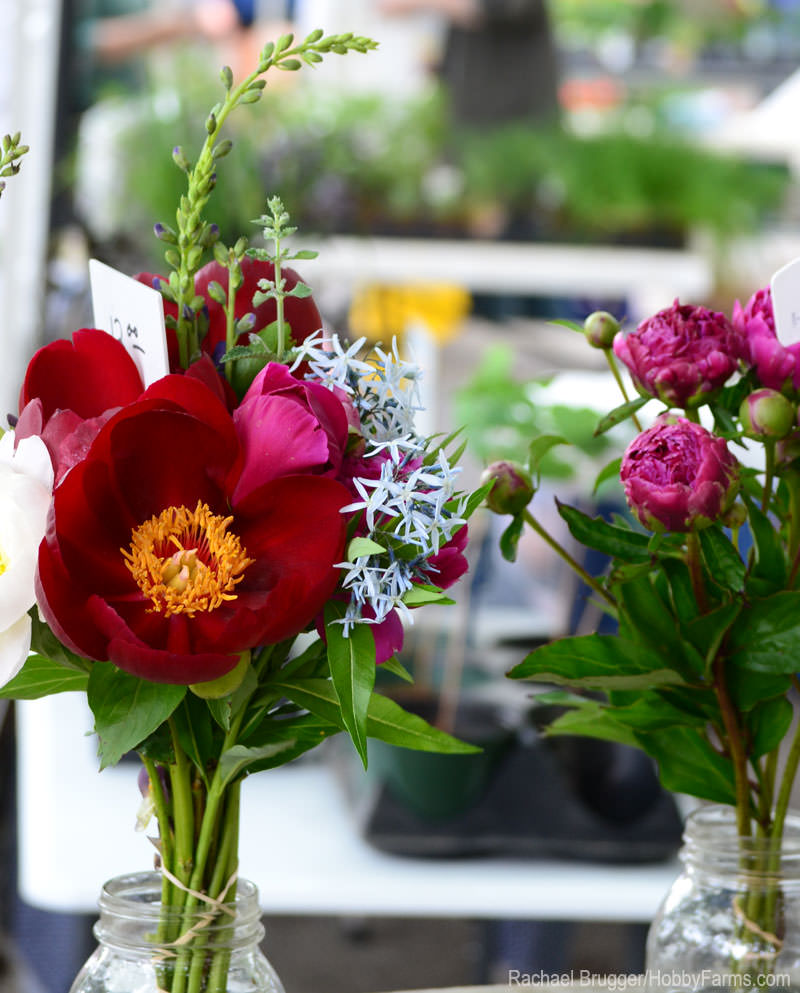
 Courtesy Rachael Brugger/HobbyFarms.com |
Valentine’s Day is upon us! Strangely enough, it has become a day of controversy. Many feel it is a day that was created by the greeting card companies and florists to sell flowers, and they avoid any celebration of it completely.
I remember in my single days feeling a lot of eyes on me on Valentine’s Day. The day puts a lot of pressure on everyone, be they single or attached, because of the loaded meanings we have placed on its connection to romantic love. This day was so much simpler when we were in grade school and we all passed out valentines in class. There were always classmates who we were sweet on, but we also gave valentines to our friends. There were some that just expressed sentiments like “I’m glad we’re friends.” As we got older, somehow our affection was supposed to narrow and was to be showered only on family or lovers.
I’ve wandered onto this tangent because I’ve been thinking about the typical Valentine’s Day red roses. In the language of flowers, we have positively regressed to a one-word vocabulary.
Victorians and Floriography
In Victorian times, people were decidedly more reserved. They didn’t have social media that allowed them to say whatever wandered into the empty space between their ears at all times of the day. It was actually rather difficult, socially, to express the emotions that one had about others. So during the 19th century, most everyone had access to the floriography code book that helped them “say it with flowers”.
When a woman needed to express her desire to start up a love affair, to turn down a proposal, to express her feelings of betrayal or to send a note of friendship, she would consult the book. Just like that, an uncomfortable conversation could be averted. Just about every nuance of human emotion could be expressed with one flower or a combination made into a nosegay.
Remember those awkward conversations with the boy you were dating when you realized you didn’t like him in the same way he liked you? You could’ve just sent him a spiderwort plant, meaning “esteem, not love.” Or for the guys, what would you give to a girl who’s become too clingy? A bouquet of butterfly weed meaning “let me go.”
The great thing about rediscovering the language of flowers is that it opens up your options for flower giving this Valentine’s Day and expands your circle of gift recipients. Here are some flowers and their meanings compiled by the Society of American Florists you might consider for your valentines this year:
- Amaryllis: dramatic
- Begonia: deep thoughts
- Camellia: graciousness
- Pink Carnation: gratitude
- Daffodil: chivalry
- Daisy: innocence
- Holly: domestic happiness
- Lilac: first love
- Orchid: delicate beauty
- Pansy: loving thoughts
- Pink rose: friendship
- Purple tulip: faithfulness
- Yarrow: good health
- Zinnia: thoughts of friends
Lost Language
Of course, the language of flowers is a lost language in the day and age of texting. If I were to just present a bouquet to a friend without some explanation, it would have the same effect as someone sending me a text message with words like IDK, 511 or BTW. Oddly enough, texting language is not that different. It’s just another way to send a message and avoid “messy” conversations or confrontations. At any rate, if you choose to send your friends a dwarf sunflower and ivy bouquet, you might take a moment to write and attach a note:
The dwarf sunflower makes me smile, it fills my heart with sunshine. This is how I feel about having you in my life. In the language of flowers, the dwarf sunflower symbolizes gratitude. Ivy uses its tendrils to encircle a tree or plant as it grows, yet it does not strangle or restrict. It provides extra strength to a young tree and beauty to an old structure. Ivy in the language of flowers represents friendship. Thus, on Valentine’s Day I am sending a sunflower and ivy bouquet to you, my friend. I am grateful for your friendship. You provide strength and structure, you support me without strangling me or holding me back. With you by my side I am able to reach for the sunshine. Thank you and happy Valentines Day!
Wouldn’t that be so much nicer than a gas-station rose that has no smell?
Of course, if we’re talking about the language of chocolate, I’m just going to tell you now, a one-word vocabulary is fine with me on Valentine’s Day: gimme!




